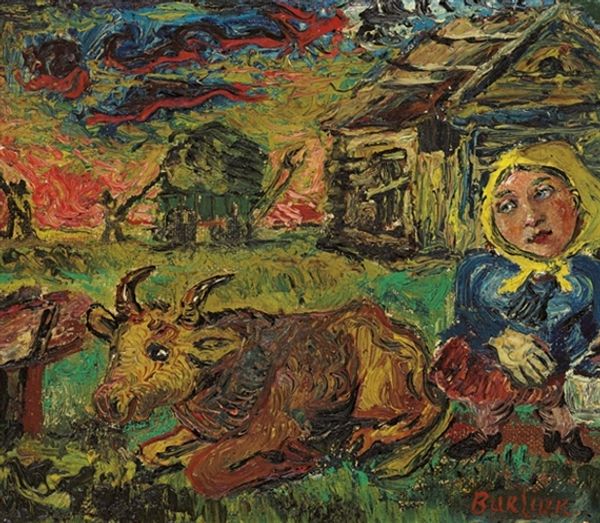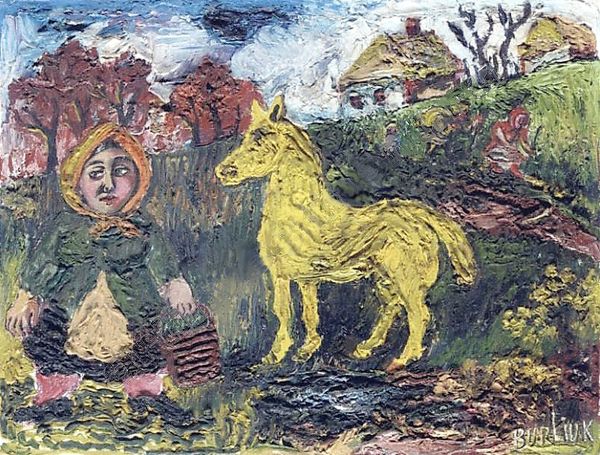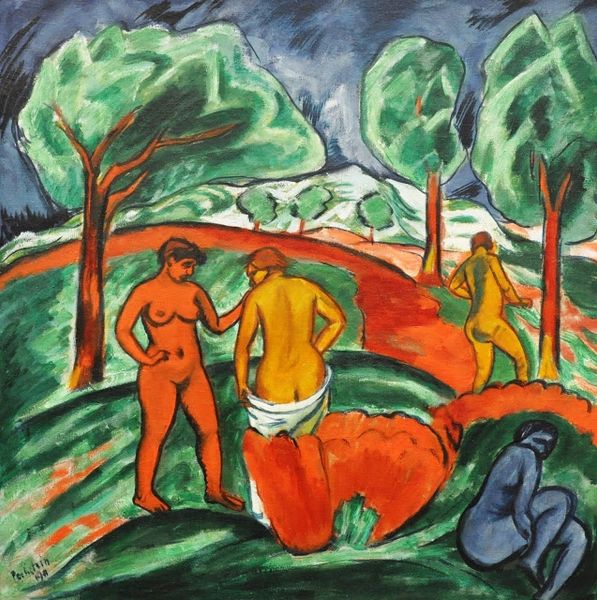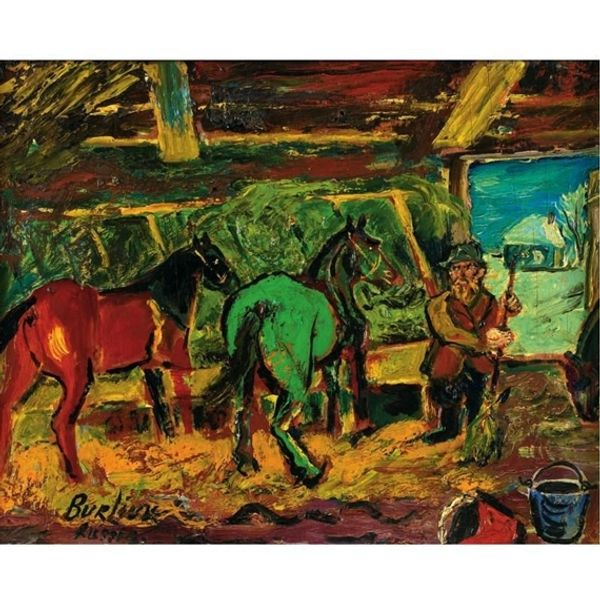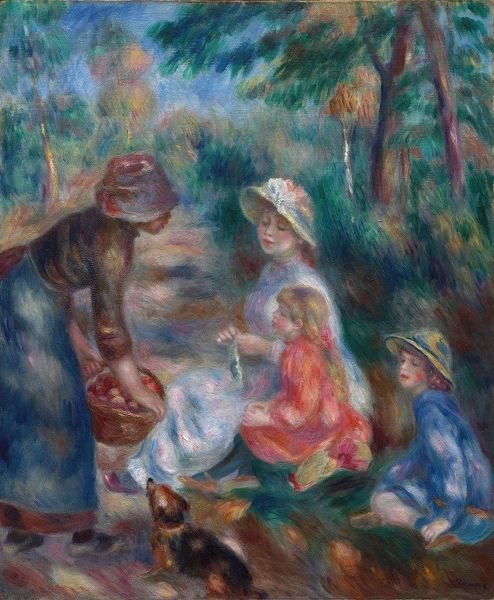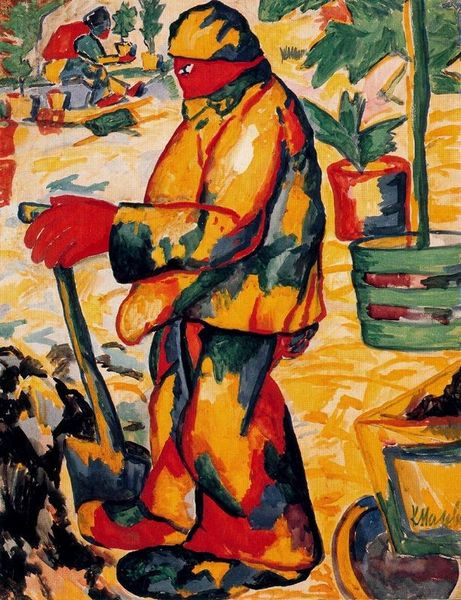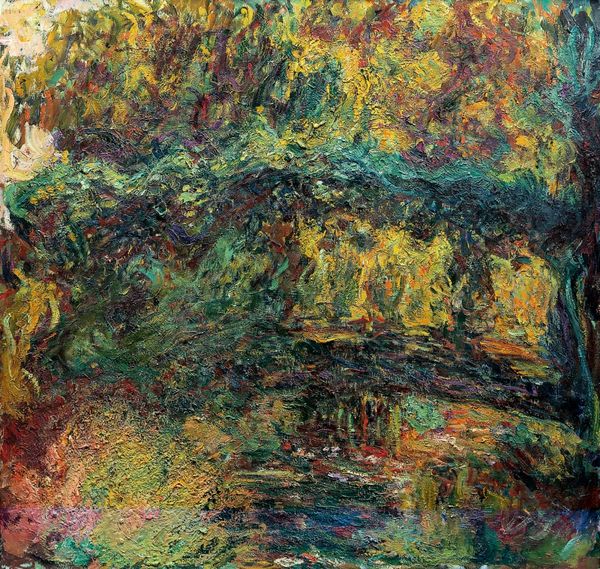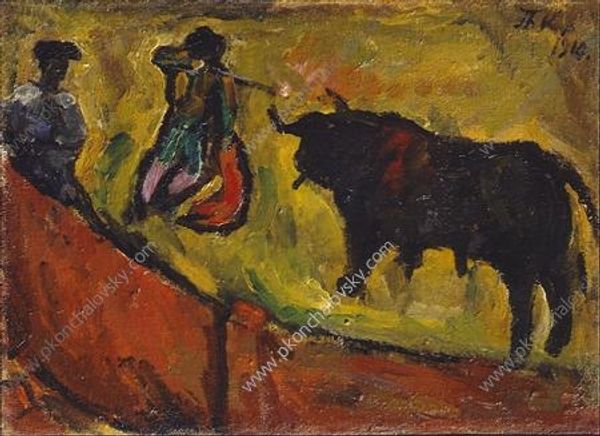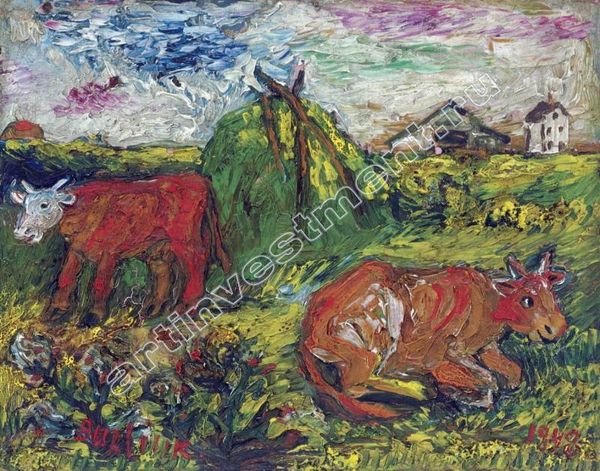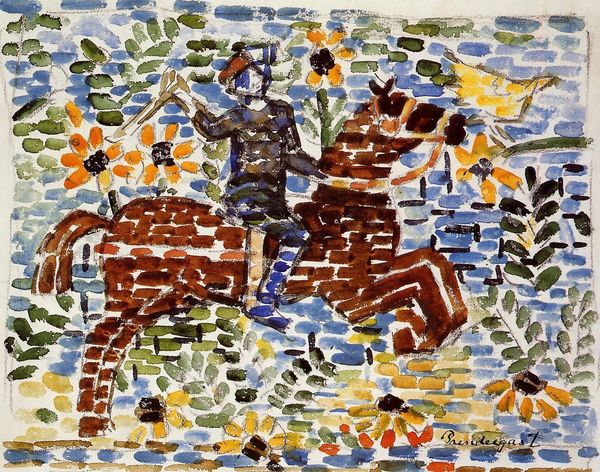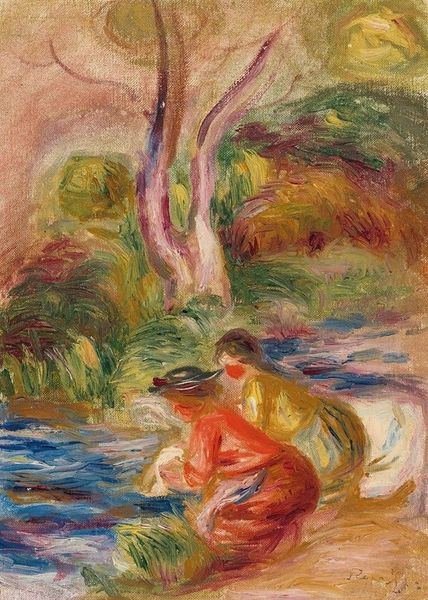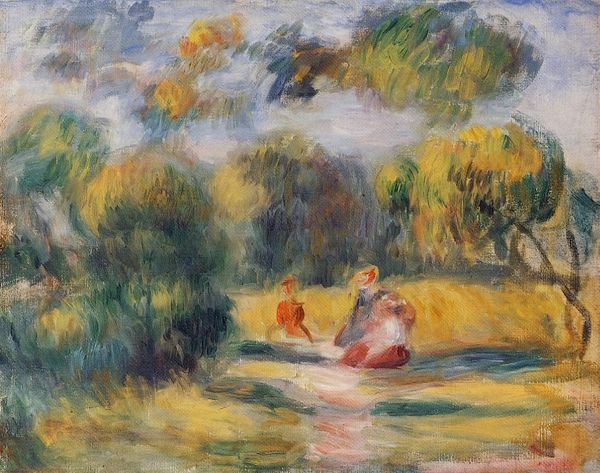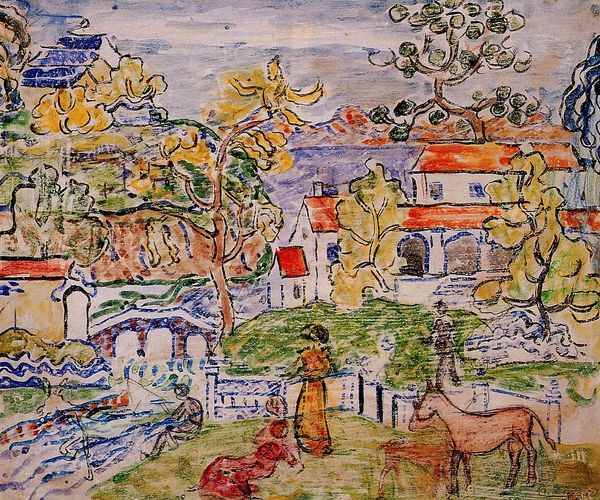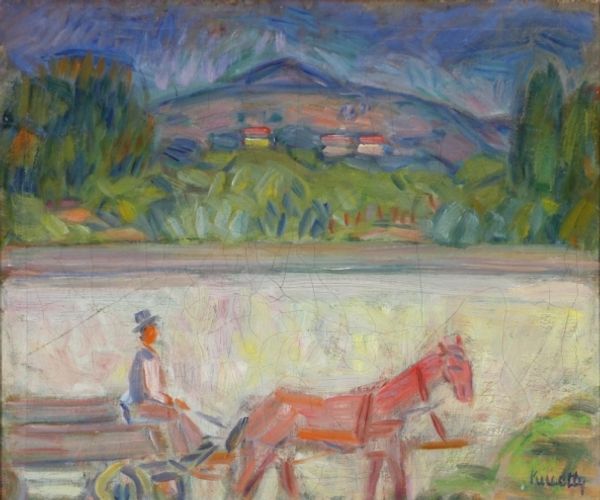
Copyright: David Burliuk,Fair Use
Curator: David Burliuk's "Man on a Yellow Horse," painted in 1950, pulsates with raw emotion. The vibrant oil paints create a textured surface, bringing a unique energy to the piece. Editor: My first impression is one of joyous chaos. The colours feel deliberately mismatched, almost Fauvist, and that horse looks like it's been sculpted from sunlight. Curator: It’s interesting that you mention Fauvism. Burliuk's engagement with avant-garde movements like that certainly challenged traditional artistic boundaries. Looking at his biography, we see someone deeply embedded in radical artistic circles, often grappling with questions of identity and representation. This "Man on a Yellow Horse" is both a portrait and a statement. How does the animal symbol function, given those themes? Editor: Horses often stand for untamed energy and freedom. But yellow? Think of the Chinese Yellow Emperor, a divine, almost mythical ancestor. By painting the horse this colour, Burliuk perhaps evokes the noble lineage within the everyman, the connection to something beyond the mundane. Curator: I appreciate your connecting it to deeper symbolism, yet it’s also useful to analyze the socio-political undercurrents. In 1950, with Cold War anxieties on the rise, was there a deliberate attempt to portray idealized, possibly even folkloric, notions of man in nature as some form of resistance or solace? Editor: That's valid. The horse drinks deeply; a quenching, cleansing ritual. And in a world rapidly industrializing and facing potential global conflict, a longing for simpler rhythms makes perfect sense. The very visible brushstrokes feel earthy and immediate. Curator: Burliuk provides such an intense intersection between individual experience, political environment, and mythological undertones, doesn't he? Editor: He does indeed. "Man on a Yellow Horse" stays with you—a strange and stirring image of individual will and ancestral memory. Curator: Exactly, making you reflect on what the role of art is, when cultural and personal memories meet under expressionist terms.
Comments
No comments
Be the first to comment and join the conversation on the ultimate creative platform.
